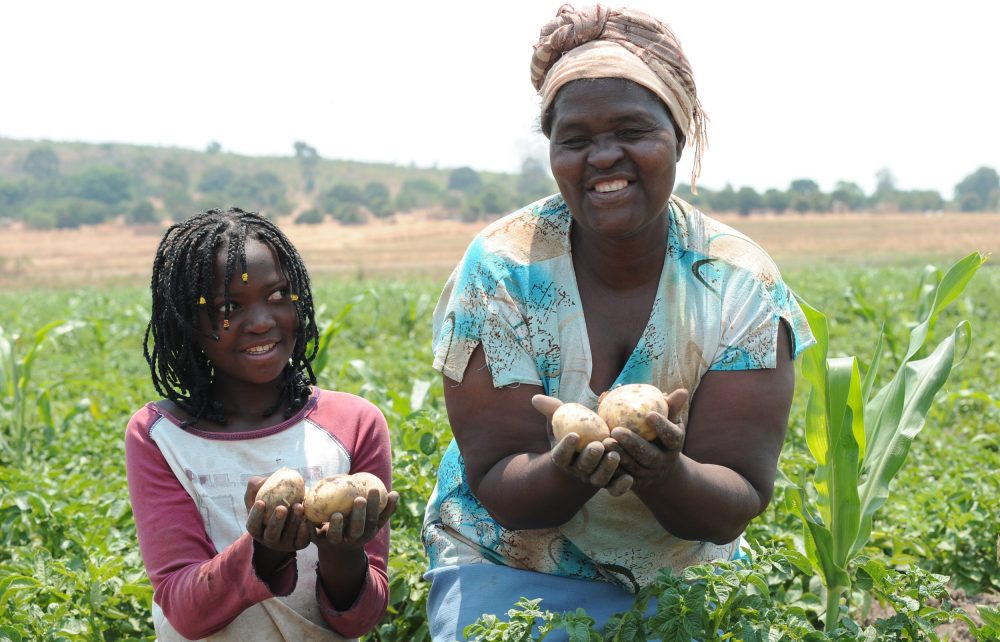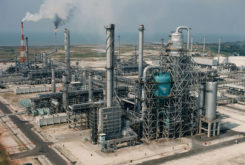The Angolan government has discussed reinvigorating its agriculture sector ever since the civil war ended in 2002. Yet the concentration of economic development in Luanda and the reliance on oil income meant that far too little progress was actually made. However, three years of low oil prices and the rise to power of new president João Lourenço suggest that the government will now take the sector more seriously. This is likely to trigger more Chinese investment but lessons need to be learned from previous setbacks, including in Mozambique.
Luanda had previously banked on the re-development of its three main railway lines to kickstart agricultural investment. It is hoped that the revamped Luanda, Benguela and Moçâmedes lines will enable farmers to target international markets by providing easy access to the coastal ports.
However, far less attention has been given to improving the country’s roads. Most farmers will still have to travel more than 100km to reach a railway station and so it is vital that roads in rural areas are upgraded. According to the Angolan National Institute of Roads, there is a backlog of 7,000km of road that needs to be resurfaced or surfaced for the first time.
Although most Angolans still live in rural areas where agriculture is the main source of employment, food supply in the country is extremely dysfunctional. Most of the food consumed in Luanda is imported: not just luxury items but also food staples.
For instance, the country grows just 25,000 tonnes/year of rice, while it imports at least 400,000 tonnes/year. Indeed, rice cultivation has been abandoned in some areas where it was previously a main crop. The Secretary of State for Agriculture and Livestock, Carlos Alberto Pinto, says that addressing these imbalances will be among the new government’s main priorities.
Chinese companies are heavily involved in developing large scale agricultural projects in Sub-Saharan Africa but details are often few and far between. This could be intentional, as they seek to avoid accusations of ‘land grabs’ that are primarily motivated by supplying food to China rather than promoting local development. In addition, many of the Chinese investors are state owned and so not accountable to shareholders or public opinion, so there is less of a culture of revealing investment information.
For instance, in January CITIC and China Huashi Enterprises Company announced plans to develop agribusiness and water projects in Huila Province. Press coverage focused on meetings between the companies and the provincial governor rather than on the value of the planned projects.
Supply chain investment
The Ministry of Agriculture and Forestry announced in February that nitrate and phosphate factories are due to be developed in the near future by Moroccan and Russian companies.
Although the Ministry has not named the expected investors, the fertilisers will be used in agriculture. The government already subsidises fertiliser sales to small scale farmers, with fifty kilo bags sold at 5,000 kwanza (US$23). The factories could displace rising fertiliser imports, which jumped from an average of 40,000 tonnes a year over 2010-15 to 142,000 tonnes in 2016.
In early March, the African Development Bank approved a US$100 million trade finance facility for Banco Angolano de Investimentos for loans to SMEs operating in agriculture, manufacturing and mining. Part of the money will be used to enable smaller agribusiness companies to import seeds, fertilisers and tools, plus providing trade finance to support exports.
The African Development Bank approved a US$100 million trade finance facility for loans to SMEs operating in agriculture.
One thing that could help farmers is greater price certainty. According to government figures, many farmers sell corn at about 20 kwanza/kilo ($0.09/kilo), which is too low to boost living standards or invest in soil and equipment improvements. Yet the government is banking on increased corn cultivation to improve food security.
While national marketing boards, such as Ghana’s Cocobod, are often criticised as being out of date, they do help to stabilise the prices paid for specific agricultural commodities. However, the Angolan government has not created marketing boards, discouraging small scale farmers from investing in higher production.
Luanda’s new enthusiasm for agriculture already influences Chinese companies. The Angola-China Chamber of Commerce announced in February that Chinese investment in the country will diversify away from infrastructure projects over the next few years and include more agricultural and agribusiness projects. The members of the Chamber of Commerce currently include 230 Chinese companies.
Is big better? The lesson of Mozambique
Angolan officials have focused on the development of big projects by foreign companies but it remains to be seen whether such schemes are the best option for either boosting exports or improving domestic food security. The government of Mozambique has signed contracts for jumbo land development projects but they have yet to achieve the expected results.
Under the biggest agreement, Wanbao Grains & Oils agreed to invest US$250 million in developing a massive 20,000 hectare site for corn and rice cultivation in the Limpopo Valley, near Xai Xai. This outlay included providing comprehensive irrigation infrastructure and buying farm machinery.
However, the project has been criticised for displacing thousands of local people. Land in Mozambique is ultimately owned by the state, so it is easier for the government to transfer control from local people to foreign companies. On the other hand, this could encourage large scale investment as potential investors do not have to finance land acquisition.
Another drawback has been the widespread use of Chinese rather than local farmers. This surely runs counter to government promises of technology and skills transfer. Only 7,000 hectares has actually been cultivated to date, although the 2012-13 flood and subsequent drought were partly to blame. The average rice yield has been very low at 2.1 tonnes/hectare.
On a smaller but still big scale, PowerChina and Xinjiang Production and Construction Corporation plan to cultivate beans and corn on 3,000 hectares of land that is irrigated by the rehabilitated Macarretane reservoir, also on the River Limpopo. Agricultural development in the irrigated area is being managed by a state-owned entity, HICEP.
Sources in Mozambique suggest that the Ministry of Agriculture and Food Security is likely to approve the Chinese companies’ development plan. HICEP is also encouraging local farmers to increase their own production, partly through the acquisition of a rice processing plant last year, suggesting that some lessons have been learned.
The reservoir was heavily silted, particularly by the 2013 flood, but has now been dredged and the whole structure redeveloped with US$32 million of World Bank funding. Limpopo Basin director Edgar Chongo said: “An intervention like this was urgently needed. The risk of inaction could be the collapse of the infrastructure altogether over time, and with it a destruction of an entire chain of production and livelihoods established in this valley for over 60 years.”
Beijing’s strategy
Massive Chinese investment in African agriculture was motivated by a desire to ensure food security in China in the aftermath of rocketing global food prices in 2006-08. Some other governments followed suit. However, prices fell during the subsequent international economic crisis, while Chinese agricultural production rose on the back of plentiful subsidies. African land was never needed quite as much as expected and investment in such jumbo projects has fallen.
Chinese national Shenggen Fan, who has been director general of the US-based International Food Policy Research Institute for nine years, said: “One expectation was that these companies would be able to re-export all these grains back to China, but that didn’t happen. When you move grain from a country—even if you produced the grain—you have to follow that country’s trade policy. You can’t just say, ‘It’s mine, I’ll move it where I like.’”
International food prices are likely to periodically rise again in the future, so Beijing has not abandoned its policy of encouraging investment by Chinese companies in African agriculture.
Given past experience, however, investment is likely to be more targeted, with more emphasis on the entire supply chain.
The Indian government has followed the same policy on a smaller scale. Mozambican farmers were encouraged to increase their legume production following talks between Indian and Mozambican officials in 2012-13. Pigeon pea production in Mozambique jumped from 60,000 tonnes in 2014 to 300,000 tonnes in 2017 as a result, but again the prices paid by Indian traders have fluctuated widely.
Striking a balance between big projects and smallholders is far from easy. Irrigation projects are often huge but agricultural development usually has the biggest impact on living standards when it is undertaken by small scale farmers. It would be easy to argue that the two should be separated but someone still has to pay for irrigation schemes. Small scale farmers lack the financial resources to fund dam construction. Most agriculture in both Mozambique and Angola is rain-fed, subsistence agriculture is common and fertiliser consumption is far too low.
According to the United Nations Food and Agriculture Organization, Mozambique could irrigate more land than any other African country at 3.1 million hectares out of 5.65 million hectares of arable land, yet its latest full survey found just 118,000 hectares of fully irrigated land in the country. Most of this is used to grow sugarcane. There could be some regional bias, as most of this irrigation potential is in the north and centre of the country, although the biggest irrigation schemes have been in the south.
Agriculture accounts for just 25% of Mozambican GDP, despite the fact that 67.5% of the population lives in rural areas, where most people work in agriculture. Yet this figure is more impressive than that for Angola, where it is responsible for a meagre 12% of GDP, although 55% of Angolans live in rural areas. Both countries need to become far more productive in crop cultivation but they would be wrong to bank on huge Chinese projects.
Chinese companies invested US$52 billion in overseas agricultural projects between 2005 and 2016 but the lion’s share of that figure, particularly in the latter years, was directed at buying established brands in North America, Western Europe and other industrialised regions. It is difficult to obtain a regional breakdown, but it appears that less than US$4 billion of that amount was spent in Africa.




